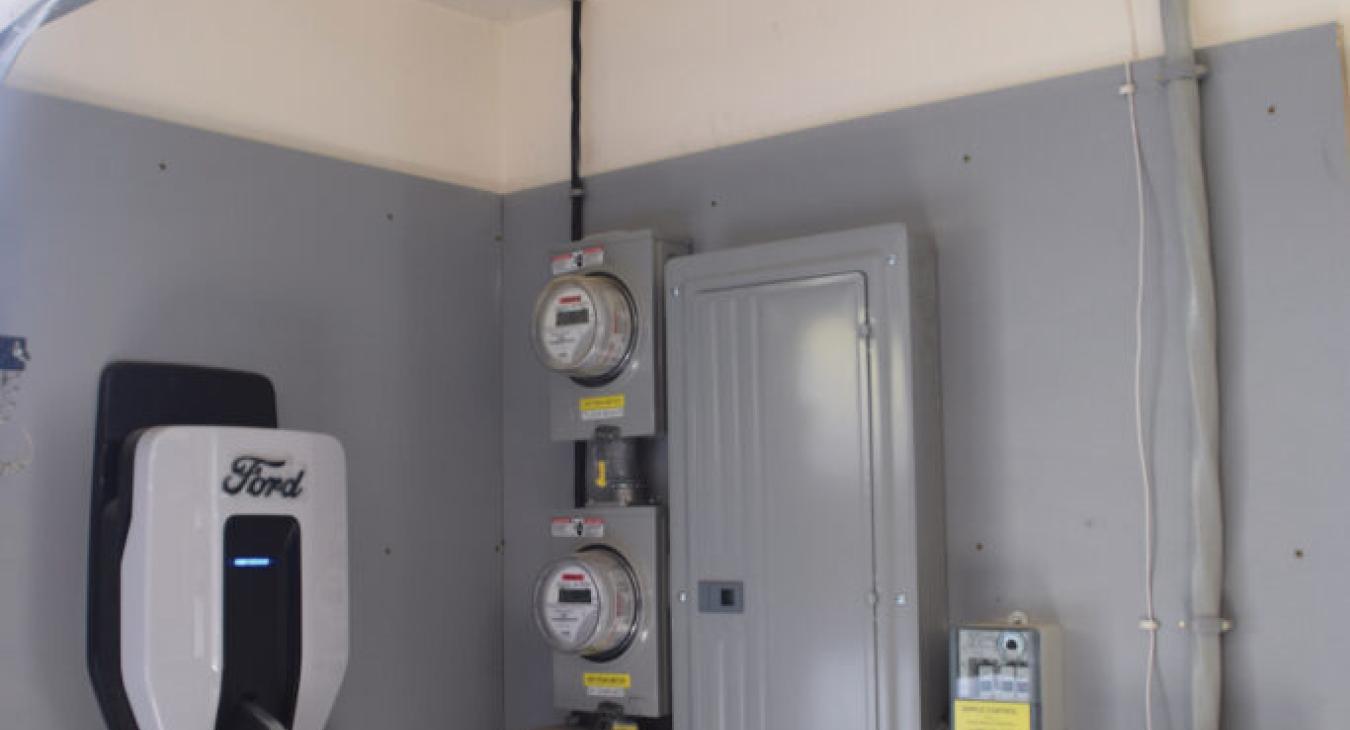With the help of Nodak Electric, this house is EV ready.
While more than 10 million EVs are on the road worldwide, the network of public electric vehicle charging stations remains thin in the United States. That’s why charging at home remains the preferred method for EV owners. But is charging your EV at home as simple as plugging your car into an outlet in your garage? The answer is: It depends, mostly upon the electrical situation in your garage and home.
Before installing your at-home charging station, contact Nodak and speak with an energy services specialist to determine whether your garage is equipped to do what you need it to do. Early EVs were able to charge from a standard, 120-volt outlet — just like any other appliance you plug into a wall socket. That’s not the case anymore.
The good thing is that most newer EVs are equipped with a larger battery that can last for up to 300 miles on a single charge. However, those batteries require more energy to “fill” the tank. Newer EVs are similar to adding a large appliance such as an electric water heater to your home; most EV chargers that can effectively recharge newer EV batteries require at least a 240-volt, 40-amp circuit to operate (similar to most electric water heaters).
Depending on your home’s setup, installing an EV charger may take multiple steps. The easiest installation is when there is already a spare 240-volt circuit where the car will be charging. More likely though, a new 240-volt dedicated circuit will need to be installed from the circuit breaker box to where the car will be charging. In some cases, be prepared for more extensive upgrades to your home’s electric service. That’s why it is important to touch base with Nodak before you begin.
While this may seem complicated, it’s not complicated for your electrician. An electrician can analyze your home’s energy use and tell you if you need to upgrade the service at your home. Your electrician also can work with Nodak to ensure that any needed updates to your home make it EV charger ready.
Once the garage has a 240-volt circuit, there are a whole host of options to get the electricity into the EV’s battery. EV manufacturers such as Tesla sell affordable adapters that work with a 240- volt circuit to charge the car’s batteries.
You can review the charger options that would work for an EV that catches your interest. Fortunately, EV chargers can efficiently charge most vehicles overnight – even after long trips – ensuring that you are ready for your commute every morning. And even more fortunately, electricity costs for an EV can lead to some long-term fuel savings compared to gasoline. Don’t forget to also take advantage of Nodak’s rebate for installing an EV charger, in addition to their low off-peak rate for EVs.
Don’t let any of this discourage you from exploring the purchase of a new EV. It just requires a little homework, and with the help of Nodak, we can assist in the steps needed to prepare your home for an electric vehicle.
Article courtesy of powermoves.com

